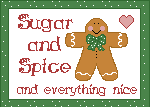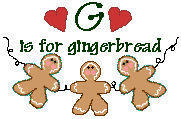


 Ginger is a tangy spice most commonly used in baking and in flavoring beverages. It comes from the rhizome (underground stem) of the ginger plant, which is grown throughout tropical Asia, Japan, the West Indies, South America, and western Africa. The finest ginger comes from India and Jamaica. The long stems and grasslike leaves of the ginger plant sprout directly from the knotty, root-bearing rhizome. Conelike yellowish-green flowers, streaked with purple, grow on the stems. There are four main varieties of the spice: (1) dried, (2) black, (3) white, and (4) preserved. Dried ginger is made by washing and drying the rhizomes. Black ginger is prepared by scalding the rhizomes with water and drying them. In making white ginger, the outer layers of the rhizomes are peeled off before being washed and dried. Preserved ginger is made by peeling the rhizomes and boiling them in syrup. Most preserved ginger is made in China.  Ginger is used to flavor such baked goods as biscuits, cookies, gingerbread, and pies, and to season meat and vegetable dishes. It is also an ingredient of ginger ale, ginger tea, and other beverages. Oil of ginger is used in making perfumes and as a medicine for certain ailments, including stomachache and toothache. A plant called wild ginger belongs to the birthwort family and is not related to true ginger. It grows in shady woodlands of the Northern United States. Wild ginger is a low, woolly plant that has heart-shaped leaves and one bell-shaped, brownish-purple blossom. The root of wild ginger is used as a stimulant and as a spice. Scientific Classification. Ginger belongs to the family Zingiberaceae. Its scientific name is Zingiber officinale. Wild ginger belongs to the family Aristolochiaceae. It is Asarum canadense. ~Above Information from the World Book Encyclopedia~ |
The
Best-Known Gingerbread House is from "Hansel &
Gretel" |
"Hansel and
Gretel" Children's Opera |
Crunch-top
Gingerbread Crunchy Topping: Combine 1/4 cup
brown sugar, 2 tablespoons enriched flour, 2 tablespoons
enriched flour, 2 tablespoons butter or margarine, dash
salt, 1 teaspoon cinnamon, and 1/2 cup broken California
walnuts; mix thoroughly. |
~Gingerbread
Men Ornaments~ NOTE: I have not tried these. Remember that they are NOT edible. Visit Melanie's Christmas Crafts Page for more details on how to make the ornaments. |
The Gingerbread Tree
Doum
palm, pronounced doom, also spelled doom palm, grows in
Arabia, Upper Egypt, and Central Africa. Each branch of
the doum palm ends in a tuft of deeply lobed, fan-shaped
leaves. The tree bears an irregularly oval fruit about
the size of an apple. The fruit has a red outer skin and
a thick, spongy, and rather sweet inner substance that
tastes like gingerbread. For this reason, the doum palm
has often been called the gingerbread tree. Large
quantities of these fruits have been found in the tombs
of the Egyptian pharaohs. The seeds are a source of
vegetable ivory. |
|
|
Grimms Fairy Tales
Grimm's
Fairy Tales is a famous collection of German folk tales.
Most of them were collected by two brothers, Jakob and
Wilhelm Grimm. The most famous tales include "Hansel
and Gretel," "Little Red Riding Hood,"
"Snow-White," "Rumpelstiltskin,"
"Sleeping Beauty," "Cinderella," and
"Rapunzel." As the Grimms knew, some of their
stories had been previously published, especially in
Italy and France. |
What
is a Gingerbread Hornbook? In the 1700's, gingerbread "hornbooks" were often made. Students were allowed to eat a letter of the alphabet that they had learned. Hornbooks were used only in England and America. ~From The World Book Encyclopedia~ |
|
A GAME for you to try
"Gingerbread House"
Now you try it. Next time use "Hansel and Gretel". |
|
NOTE: Many of you have asked me about
Gingerbread Border Print to add to your kitchens or other rooms
in your home. Personally I don't know anyone who makes it. What I
suggest is that you check with Home Depot in your area. If they
don't have it ask them to help you locate it or where they might
suggest that you try next.
NEW - If you are in the US: One of my visitors
mentioned that she was able to find some at "The Dollar
Store" which is a chain here in the south. So that might be
a good place to start.
To see other Christmas Pages
By Annie |
And if you are done looking at Christmas..................
Annie's
Featured Holiday Page |
Annie's
Featured Page |
If you would like to have a cute
gingerbread cursor while you view this page then go to
Annie's
Gingerbread Page with Comet Cursor
Copyright 1999 - 2006 Annie's Home
Page. All Rights Reserved. I thank the Lord for
graphics artists without them these pages would not be the same.
Please visit
Annie's List of Great
Graphics Spots for a list of their links. This
site hosted by:
Christian
Web Host. Silent No Right Click Script are from Dynamic
Drive. Some Graphics
on this page from Graphic
Garden & HoneyBrook
Graphics & Cute Countryside Graphics
&
Heartwarming
Holiday Graphics. For Instructions on how
to add the no right click script
visit: Annie's "How to Add
Silent No Right Click Script" Page.